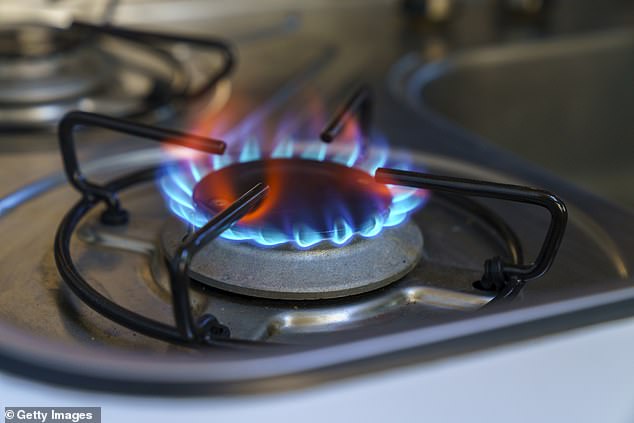One study suggests that tens of thousands of asthma cases in children have been linked to gas and propane stoves.
Researchers in California and Boston measured nitrogen dioxide levels in more than 100 American kitchens while the stoves were on and then measured how the chemical spread to other rooms after the appliances were turned off.
The team combined the data with figures from the U.S. Energy Information Administration on how often people use their stoves, giving them an estimate of how much exposure people face each year.
They found that stoves using gas and propane added an annual nitrogen dioxide exposure of 4 parts per billion, which they estimated was responsible for approximately 50,000 cases of childhood asthma.
The study comes as officials have considered banning the device over fears of asthma and climate damage, but many scientists have questioned the validity of the research methods involved in the studies.
Researchers found that stoves using gas and propane added an annual nitrogen dioxide exposure of 4 parts per billion, which they estimated was responsible for approximately 50,000 cases of childhood asthma.
“Short-term exposure to NO2 from typical gas stove use frequently exceeds benchmarks from both the World Health Organization and the U.S. Environmental Protection Agency,” the researchers wrote.
That’s because people living in spaces smaller than 800 square feet were exposed to up to 7.5 parts per billion, well above the World Health Organization’s annual limit of 5.3 parts per billion for exposure both indoors and outdoors.
Nitrogen dioxide is a pollutant composed of oxygen and nitrogen, which forms when fossil fuels such as coal, oil and methane gas are heated to high temperatures.
According to the American Lung Association, nitrogen dioxide has been shown to cause increased airway inflammation, coughing, wheezing, reduced lung function, and asthma attacks.
Data were collected from households in the following cities: San Francisco, California; Los Angeles California; Bakersfield, California; Denver, Colorado; Houston Texas; New York, New York; and Washington DC.
The team took into account scenarios such as windows open or closed, burners on low versus high settings, and range hoods on or off.
In addition to nitrogen dioxide exposure levels, the team found that people living in homes smaller than 800 square feet had four times more nitrogen dioxide exposure than those living in homes larger than 3,000 square feet.
And the team also pointed out racial disparities. American Indian and Alaska Native households had 60 percent more long-term exposure than the study average, and Black and Hispanic households had 20 percent more exposure.
Poorer people were also at greater risk.
Dr Rob Jackson, co-author of the study and professor of Earth Sciences at Stanford University, said: “We found that poor people breathe dirtier air outdoors and, if they own a gas stove, indoors as well. “.
“People who live in public housing and poorer neighborhoods and who often rent cannot change their appliances because they do not own them or they cannot afford them.”
However, the study’s caveats included relying on self-reported behavioral data, such as asking people how high they turned their stoves on, and not taking into account individual health conditions.
Previous studies have also shown an increased risk of childhood asthma from exposure to gas and propane stoves. TO 2022 reportFor example, it found that these devices increased the risk of asthma in children by 13 percent.
Additionally, scientists at Purdue University and Indiana University found that cooking on a gas stove led to greater exposure to harmful nanoparticles than breathing car exhaust.
Last year, New York became the first state to call for a ban on gas appliances.
However, research linking these devices to asthma has drawn criticism from other researchers and health authorities for its flawed methodology and lack of concrete evidence.
The American Gas Association, which represents energy companies that supply natural gas, questioned previous research referenced by the study’s authors.
He pointed to a February study which found that although cooking with gas slightly increased the risk of asthma in children, the result was not statistically significant. This led the agency to call the findings “misleading and baseless.”
The study was published Friday in the journal Scientific advances.


